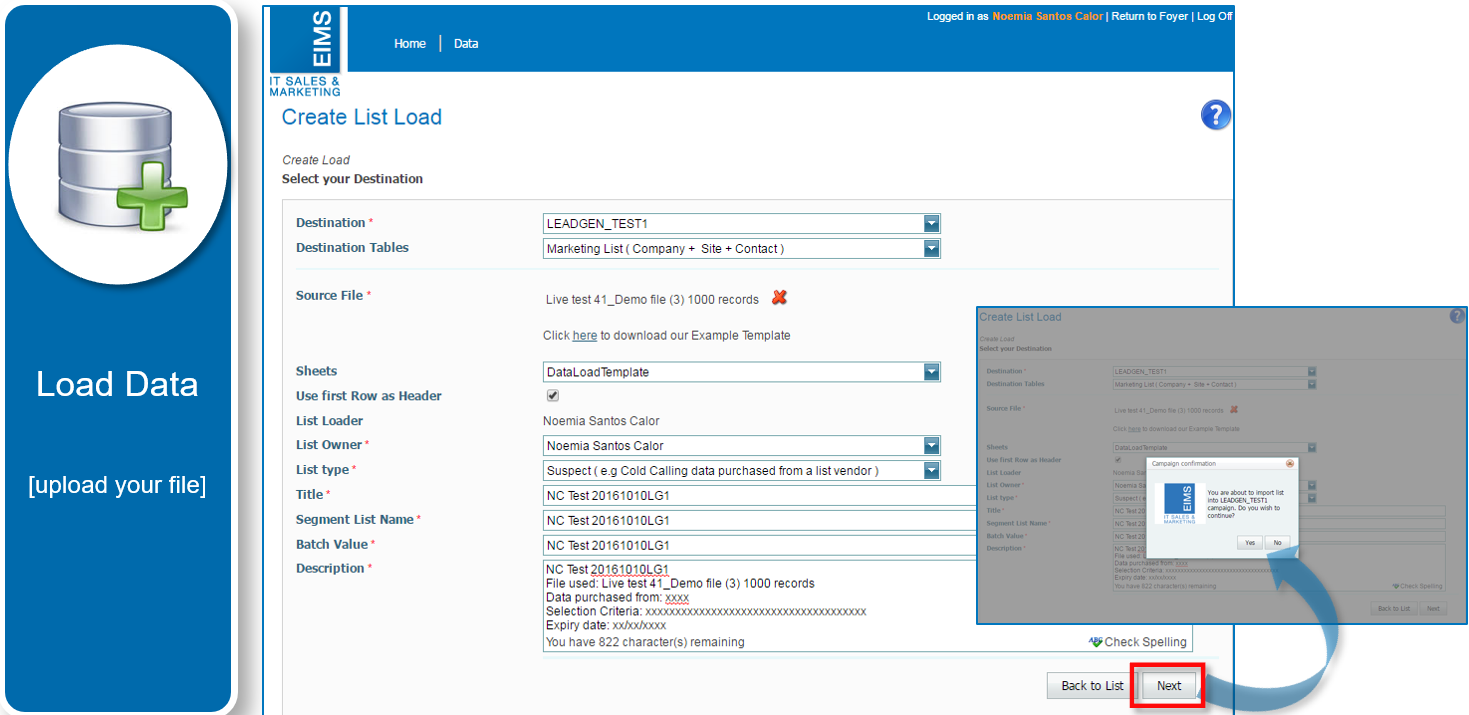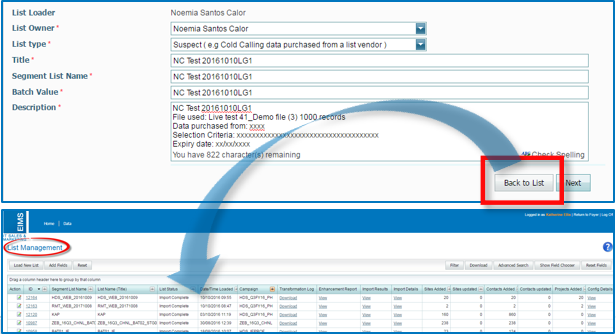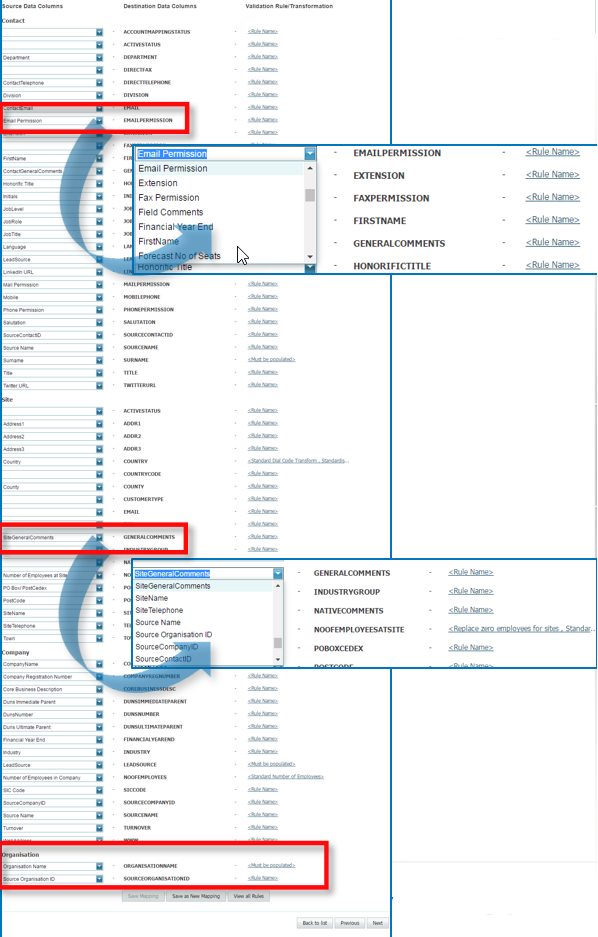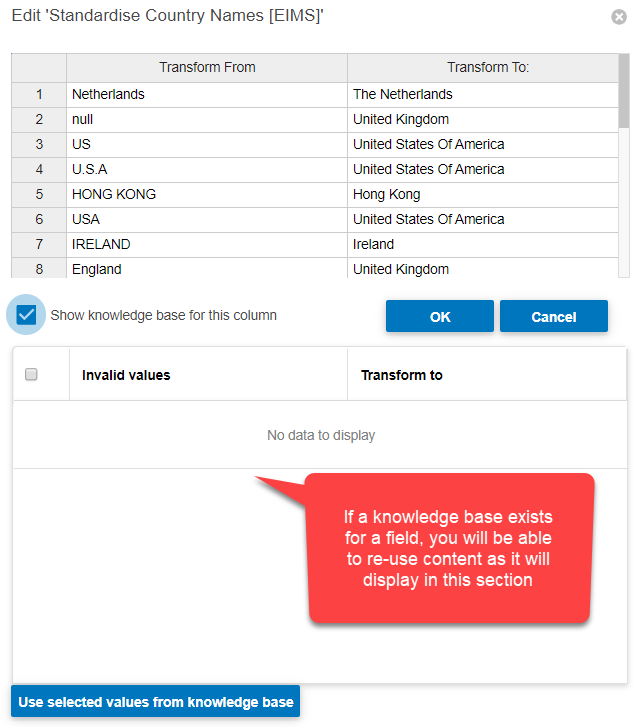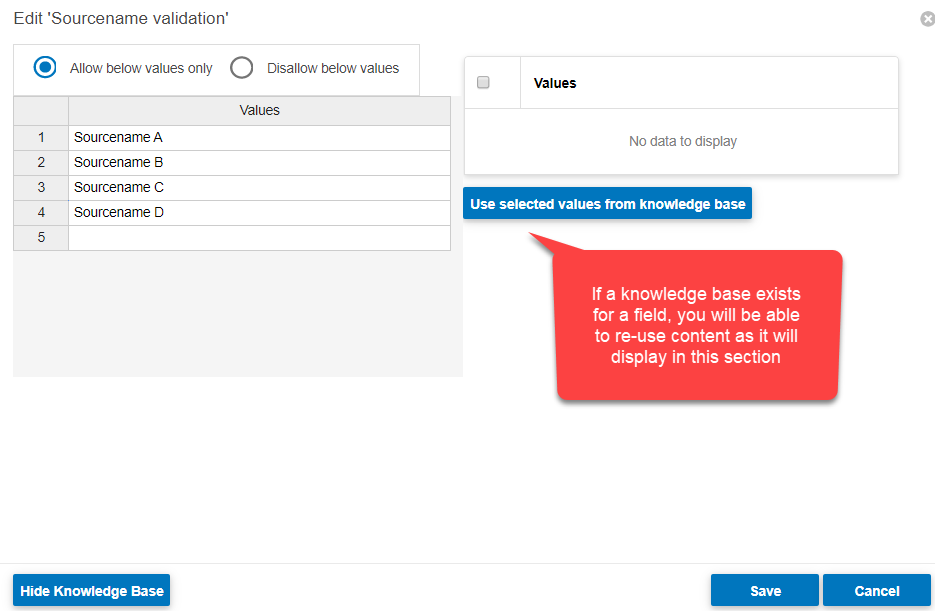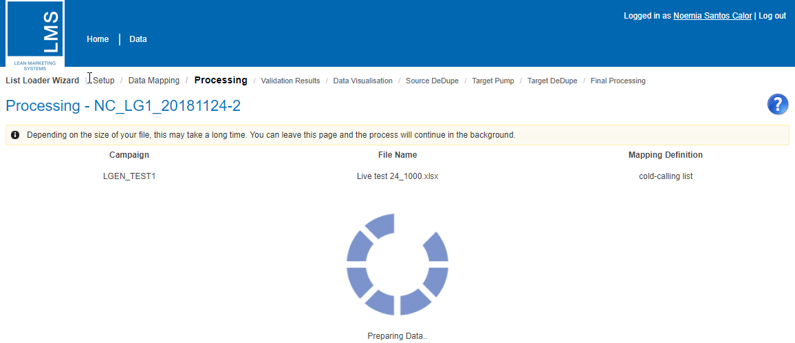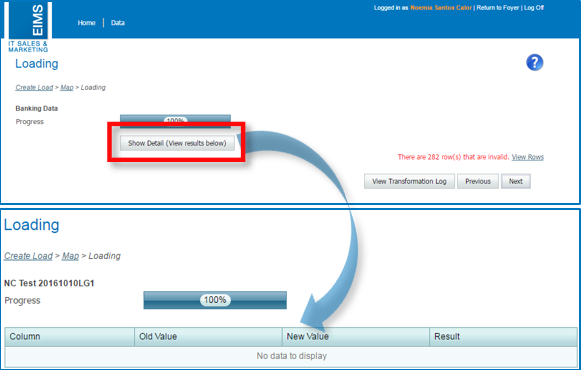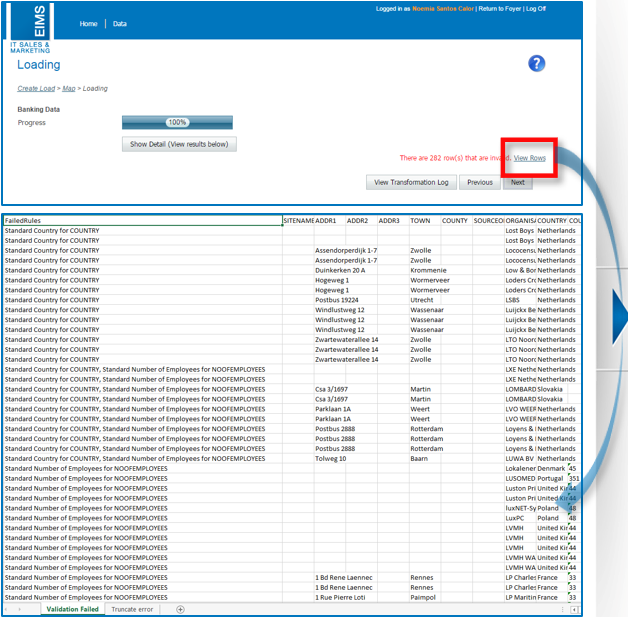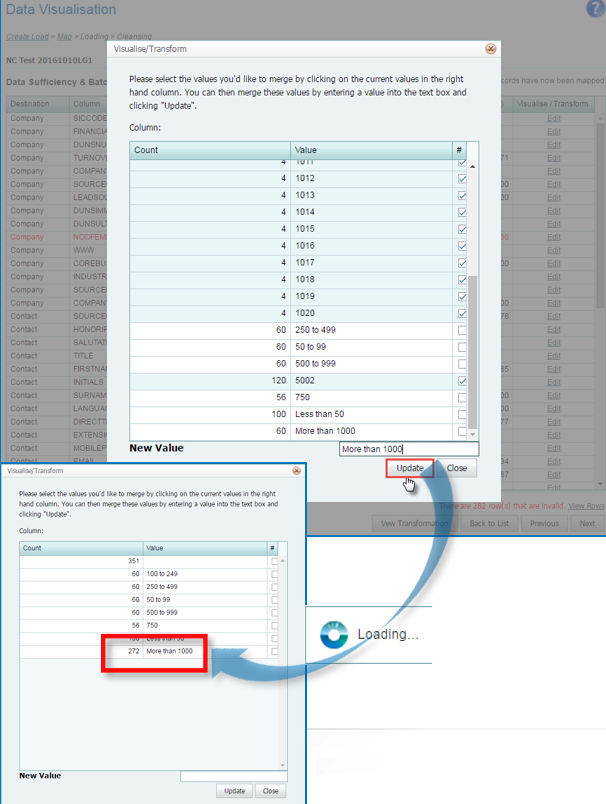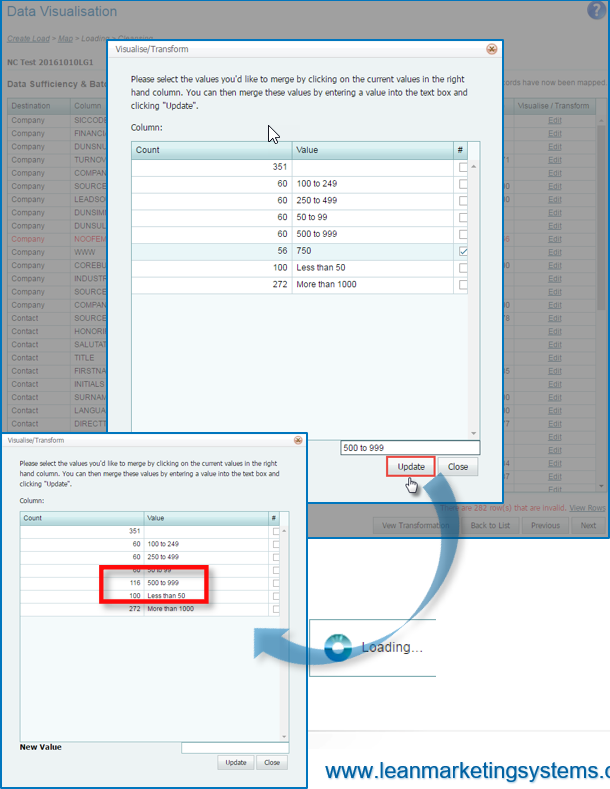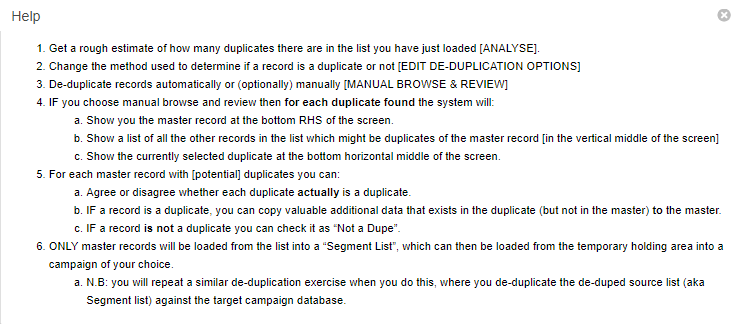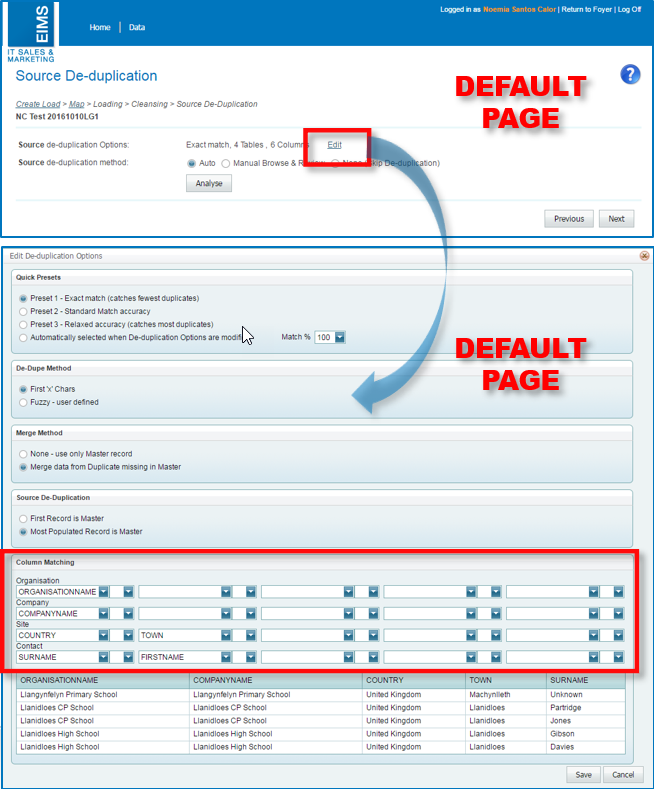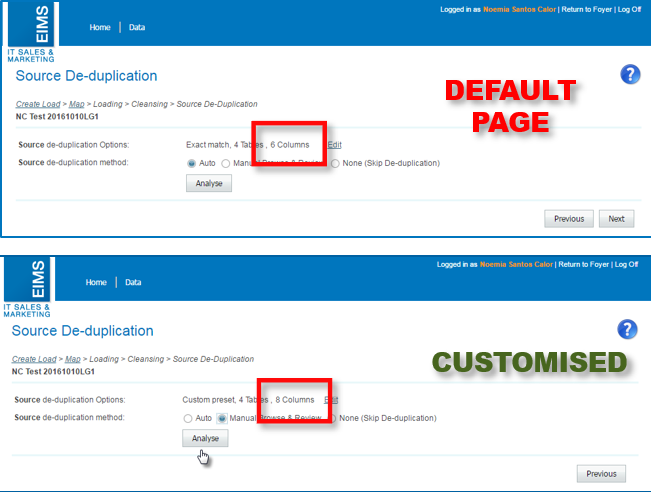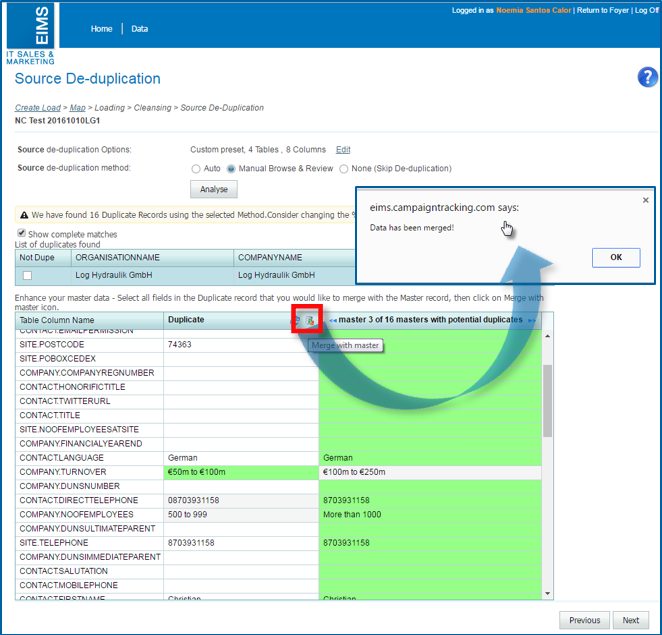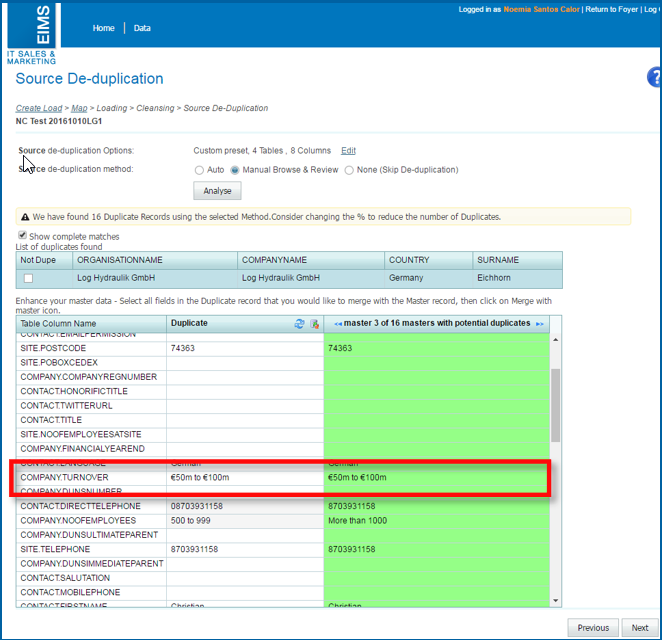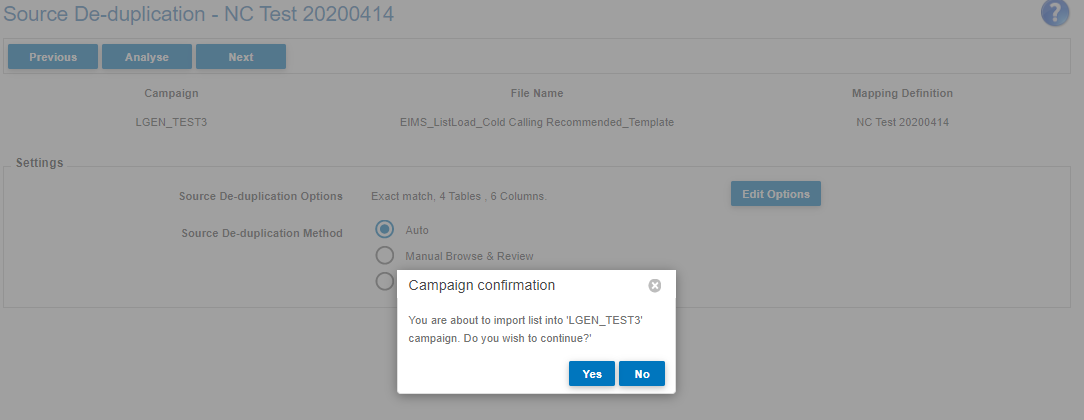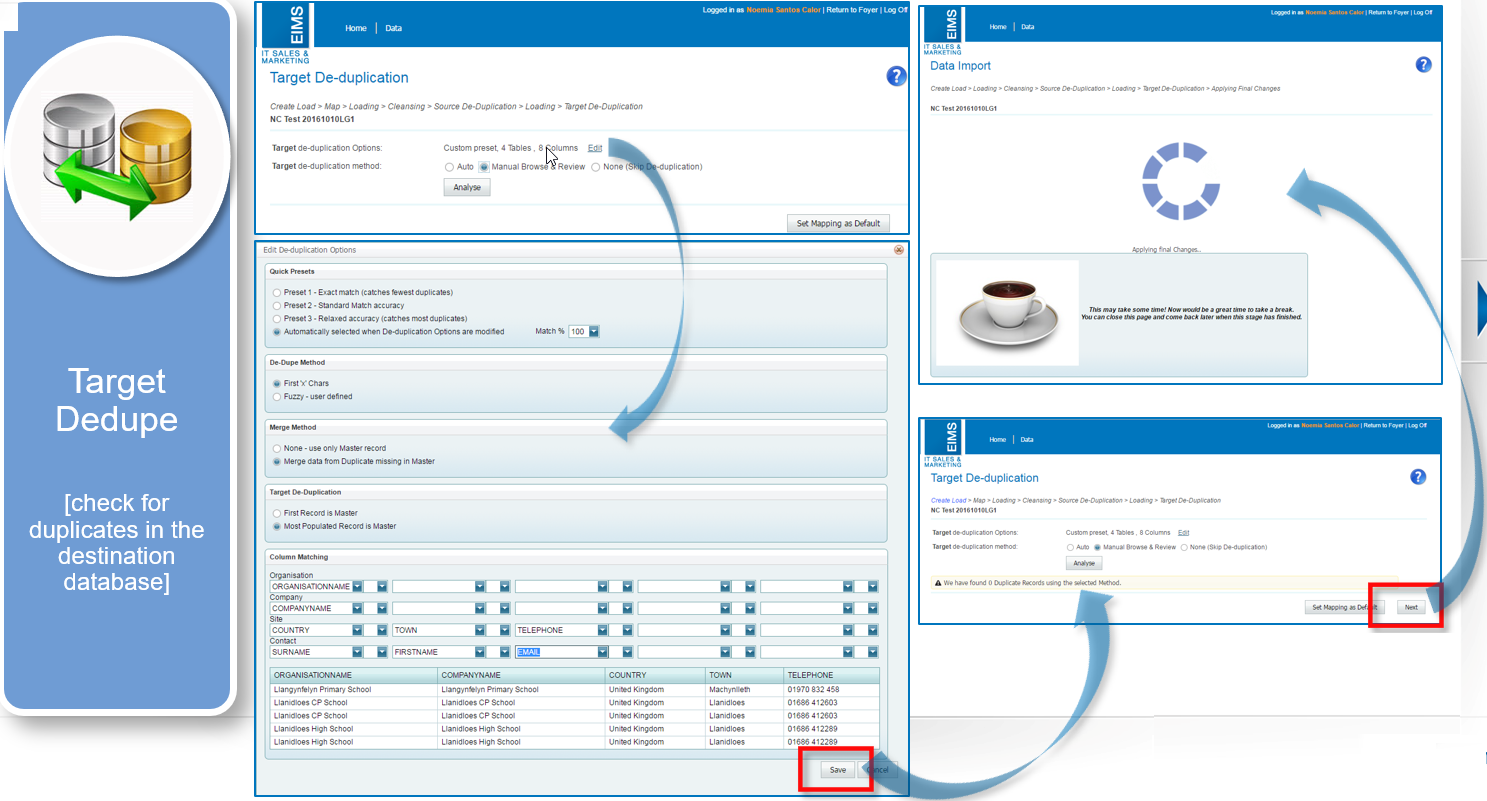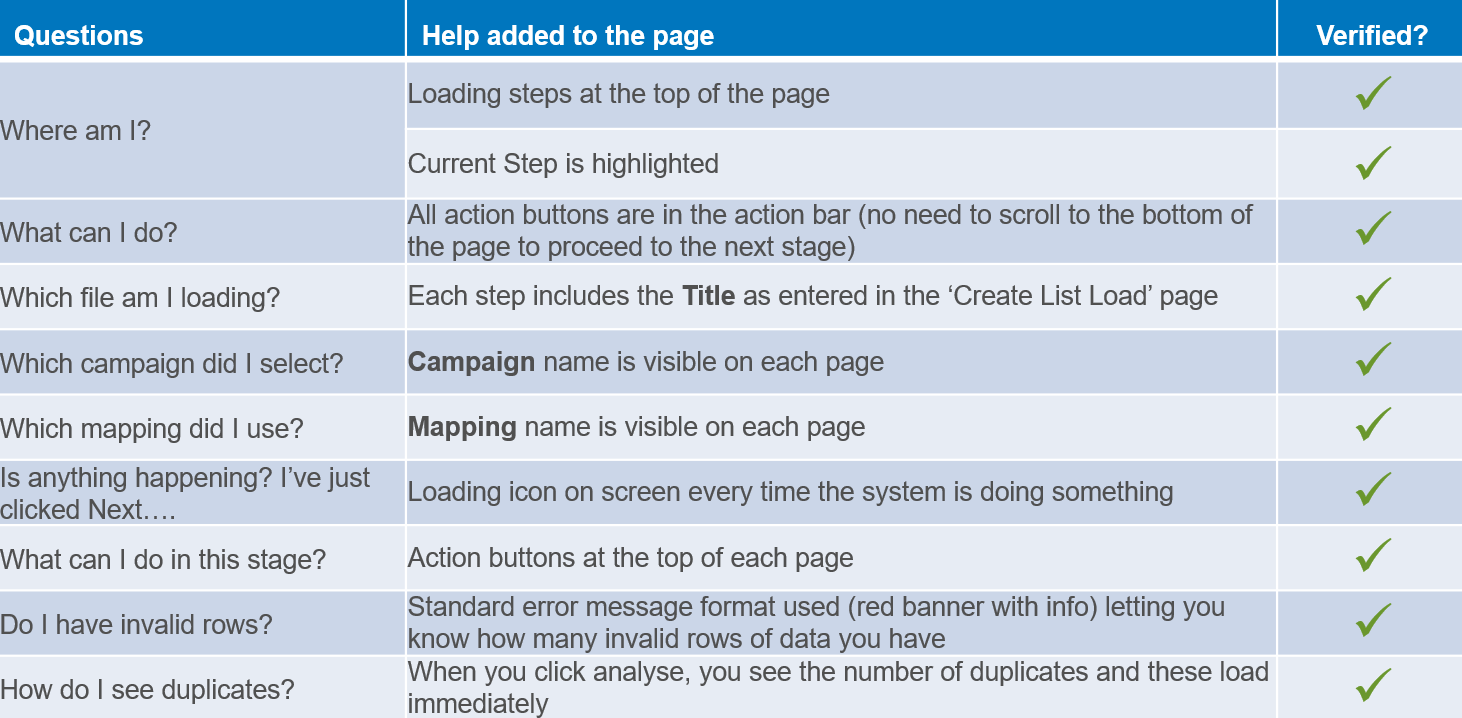Step by Step: List management - Status of loads & reports
For all campaigns see the files that were uploaded
-
- You can use standard FSG functionality on this grid [filter, search, group]
- Status for each upload = List Status
- Date & Time loaded
- Number of Sites/Contacts/Projects added & updated
- Config Detail [contains the configuration detail of your mapping]
- Good to check if you mapped anything incorrectly….
- Reports
- Only the SQL to XLSX reports are available at the moment
- Transformation Log & Import details

List Management: action icons in line with status of load
In List Management you will see the following action icons in the Action column (in line with the status of the load):
- None – if the load has reached ‘Import Complete’ status
- Edit action icon – if the load is in a status where it can no longer be deleted, but can be progressed to end. Applies to status ‘Target De-Duplication’, ‘Awaiting Final Changes-Dedupe’, ‘Awaiting Final Changes-Skip’, ‘Awaiting Final Changes-Manual’ & ‘Target Pumping in progress’. If you click on Edit the Activity Log pop up will load. Read more about it below.
- Edit & Delete action icons - if the load is in a status where it can be edited and deleted. Applicable to these statuses: ‘Data Map Selection’, ‘Batch Data Cleansing’, ‘Source De-Duplication’, ‘Source Validation Complete’

Activity Log
When any data load is edited from the action column in List Management page, the Activity Log pop up will surface.
In this log you can see when and where actions have been started and completed for the list load. See an example below for a load which is at the 'Data Map Selection' stage:

If you edit a load which has List Status 'Import Complete' then you will find a complete log from start to end of the load, itemising all of the actions taken during the loading process for the data file. See an example below:




